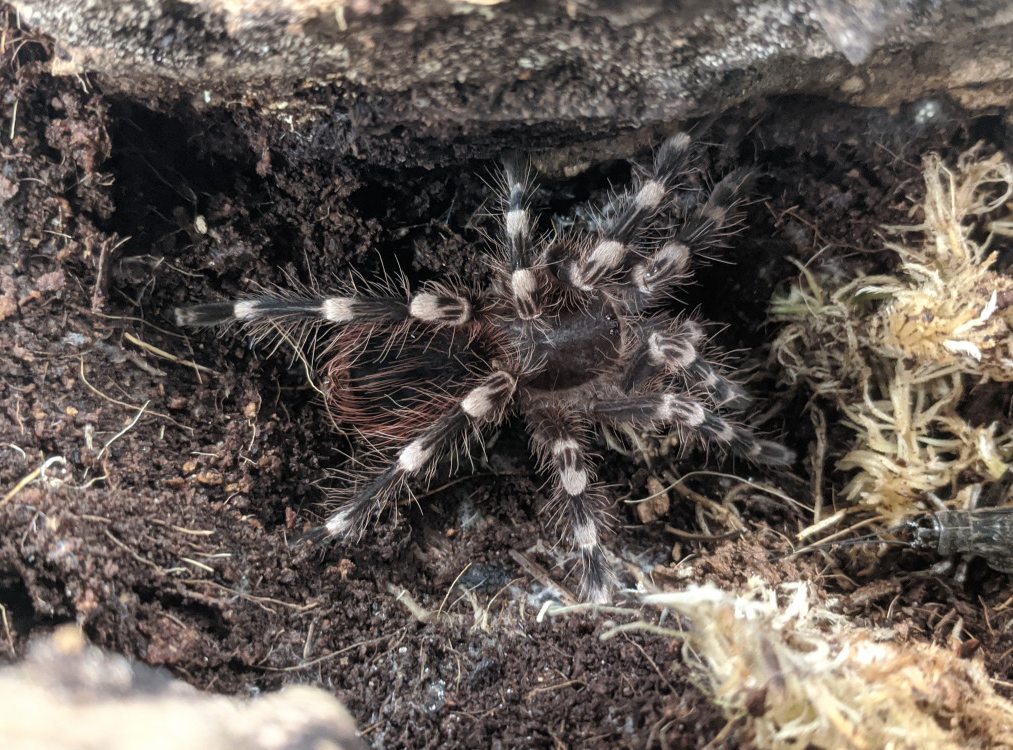
The Giant White Knee Tarantula is a species that originates from Brazilian rain forests where they take refuge in burrows and foliage. They are a larger species and get their name from the white stripes on the legs which are visible against a dark brown body, which usually has a pink tinge to the hairs.
This species tends to be fairly docile, however, it is never recommended to handle them because tarantulas tend to be intolerant of handling and there is the risk of flicking hairs, which are extremely irritating, especially in the eyes. They are still interesting to watch, however, especially when feeding. Being burrowers, this species is a particularly impressive webber.
Housing
The White Knee is a large species of tarantula so requires a little more room than some other species to allow for proper movement, as well as a deep substrate for burrowing. It is best to keep them in a minimum of a 60 x 45 x 30cm terrarium for males and up to a 90 x 45 x 30cm for females due to their larger size. They are also commonly kept in same sized plastic containers – though you should always ensure good ventilation.
As they are from forest regions a soil substrate is recommended such as coco soil or ProRep Spider Life. This is moisture holding and tends to hold well if burrowed in – qualities that should be considered in any alternatives. Your tarantula will most likely make their own burrows but extra decor such as cork tubes or cork pieces, as well as smaller branches and vegetation, can help to create good shelter and a more natural setting as well as one that the tarantula can feel secure in.
Heating and lighting
Tarantulas do not require any special lighting, though you may decide to use a small LED to create night and day periods as well as aid in plant growth if you are choosing a live planted environment. They do however need to be kept warm with a cooler side and warmer side for regulation. The warmer side of the enclosure should sit around 25 – 26C – which can usually be reached with a heat mat. Any heat source needs attaching to the relevant thermostat to ensure the temperature doesn’t exceed this and keep your pet safe.
In addition, an accurate digital thermometer should be used at all times. If you decide to house your tarantula in a plastic container, airflow is essential between the heat mat and bottom of the container to prevent burn risk. The cooler end of the enclosure can remain around 20C or slightly lower, and at night, all temperatures can drop to 15C or slightly lower. This is a natural drop experienced in a wild habitat and again creates day/night periods.





